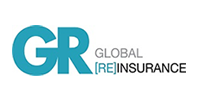According to Guy Carpenter chief executive David Priebe, there is greater stability this year after the uncertainty following hurricanes Katrina, Rita and Wilma a year ago.
“Last year many reinsurers were trying to assess the full impact of Katrina on their capital base and there was a high degree of uncertainty,” he told Insurance Times' sister publication Global Reinsurance. “There's greater clarity today.”
Comparing Katrina to the impact on the industry following 9/11 he said that the market had been in better shape last year than five years ago, when there was a very weak reinsurance market.
Unlike Katrina, 9/11 was an industry-changing event with rate hikes experienced across all lines of business. Following Katrina, hardening had mainly been restricted to US wind-exposed lines.
Priebe also feels that the lessons learned from 9/11 prepared the industry for another massive catastrophe loss. “9/11 changed the perception of risk and there was a new understanding of correlations,” he said.
But there were also lessons from Katrina: “Katrina reaffirmed that we have to look at the entire risk profile,” he added. One lesson was that there should be less reliance on mainstream catastrophe models, which are “only tools” and that “you need to use all the tools available.”
Commenting on the growth of alternative risk transfer vehicles such as sidecars and catastrophe bonds, he said Guy Carpenter was very focused on this, particularly in peak zone areas.
He said that this entailed communicating the various options to the traditional reinsurance industry but also building a broader knowledge in the investment community and communicating the ways in which it could get involved.
He said alternative risk transfer products were an “important element in serving the most distressed area of the market”.





































